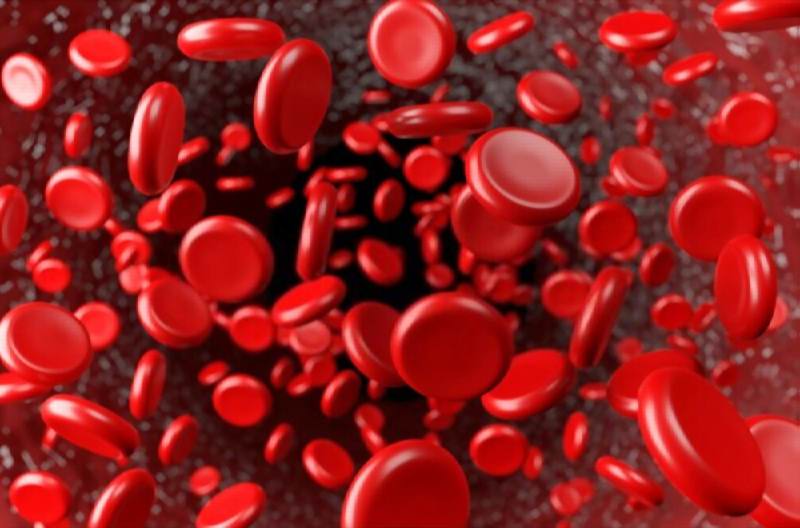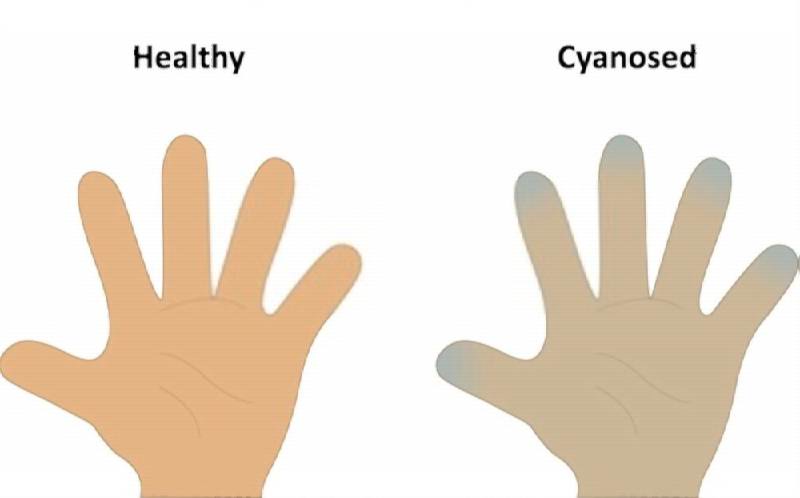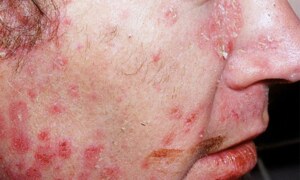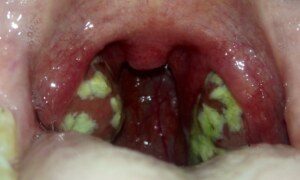Blue baby syndrome, also known as infant methemoglobinemia, is a pathological condition where a baby’s skin turns blue due to too little oxygen supplied to body cells (tissues). Generally, this occurs due to a lesser amount of physiologically functional haemoglobin (Hb) in the baby’s blood.
Haemoglobin (Hb) is a blood protein that is responsible for carrying oxygen to the body tissues. When blood can’t carry oxygen to the peripheral tissues, the skin of a baby turns blue.
Blue baby syndrome is not much common in industrialized countries, but more often it does occur in rural areas. In developing countries where quality water supply is lacking babies continue to be at a higher risk for the condition.
Causes of Blue Baby Syndrome

The baby takes on a bluish discolouration because of poorly oxygenated blood. Normally in the lungs blood receives oxygen and is circulated back throughout the whole body with help of heart. Whenever there’s a problem at the level of heart, lungs, or blood, blood may not be properly oxygenated.
The supply of this poorly oxygenated blood into the periphery causes the skin turn bluish. The lack of proper oxygenation can occur for many reasons which are though mostly acquired but may also be congenital (by birth).
Tetralogy of Fallot (TOF)

Though it is a rare congenital heart defect, Tetralogy of Fallot is a primary cause of blue baby syndrome. It’s a combination of four congenital abnormalities that can reduce flow of blood to the lungs and allow poorly oxygenated blood to flow throughout the body.
TOF includes conditions like Pulmonary Valve Stenosis (narrowing of the pulmonary valve), Ventricular Septal Defect (a hole in the wall that separates two lower chambers of the heart), Overriding Aorta (aorta is positioned directly over the ventricular septal defect), Right Ventricular Hypertrophy (thickened muscular wall of the right ventricle due to overwork)
Methemoglobinemia

It occurs when red blood cells contain methemoglobin at levels of more than 1%. It results from the presence of iron in the ferric form in place of the usual ferrous form. This condition occurs mainly due to nitrate poisoning. It may happen in babies; fed infant formula mixed with nitrate-containing well water or homemade baby food made with nitrate-rich food products, like spinach or beets.
Methemoglobinemia generally occurs in babies of age group less than 6 months. At this age, babies have a more sensitive and underdeveloped gastrointestinal tract, which are prone to convert nitrate into nitrite. when nitrite is circulated in the blood, it produces methemoglobin(MetHb). While methemoglobin binds with oxygen, it doesn’t release that oxygen into the blood. This leads to an oxygen-deficient condition which causes bluish discolouration.
Methemoglobinemia can also be congenital (the condition which is present from birth).
Other congenital heart abnormalities:

Most of the congenital heart defects are genetic. For example, babies with Down syndrome vary often have heart problems.
Maternal health issues, such as insulin-dependent diabetes, lithium intake for depression, anti-epileptic drug intake, pregnancy from ART, systemic lupus erythematosus may also result in heart defects in a baby.
Some heart defects are also caused due to idiopathic reasons. In every case of a heart defect, it doesn’t result in cyanosis (blue baby syndrome)
Symptoms of Blue Baby Syndrome
The commonest symptom of blue baby syndrome is a bluish discolouration of the skin more prominently in tongue, leaps, palm, and sole. The bluish discolouration is also known as cyanosis and is a sign that represents the child or the person is not getting the required amount of oxygen.

Among other symptoms of blue baby syndrome are:
- Difficulty in breathing
- Nausea & vomiting
- Diarrhoea
- Lethargy
- Hyper-salivation
- Irritability
- Clubbed fingers and toes
In severe conditions, the blue baby syndrome may even lead to death.
Diagnosis of Blue Baby Syndrome

A doctor on his regular check-up may suspect an infant suffering from blue baby syndrome. Parents or a caretaker who notices bluish discoloration should consult a doctor at an earliest possible.
The doctor will diagnose by taking a proper medical history, knowing about signs & symptoms present, feeding patterns, sanitation and type of drinking water keeps valuable information. They will then perform other necessary clinical examinations, observe the areas of discolouration and will listen to the heart and lungs to come to a diagnostic conclusion.
Other tests of diagnostic importance are:
- Blood examinations
- CXR(chest x-ray) to observe lungs and heart
- ECG to observe the heart functions
- Oxygen saturation test
- Catheterization of heart for direct vision of the blood vessels and structures inside it
Apart from clinical tests and examinations the water quality check for the levels of nitrates and other chemicals may also play an important role.
Water with nitrate level less than 10mg/L is considered as safe. If a water sample has nitrate level of more than 10mg/L, it is not recommended for consumption for an infant.
Treatment of Blue Baby Syndrome

Treatment of Blue Baby Syndrome, in general, depends on the aetiology of the disease. When the cause is congenital; surgery becomes the most common remedy.
At times medication may also be recommended based on the severity and type of the defect. In conditions like methaemoglobinaemia, it can be reversed by a drug known as methylene blue, which can help deliver enough oxygen to the blood. This drug is given under a doctor’s recommendation and is injected parenterally into the vein.
.
Preventive measures?
In some cases like congenital anomalies or genetic causes it cannot be prevented yet for other causes, preventive measures may work well enough to help us safety from Blue Baby Syndrome. Preventive measures include__
- Restricted use of well water: Avoid preparing baby formula with well water and don’t let babies drink well water until they’re above 12 months old. Boiling of water doesn’t remove nitrates. Check for nitrate levels in the water which shouldn’t exceed 10 mg/L. From your nearby PHED (water treatment plant) get your well water tested.

- Avoid nitrate-rich foods: Foods that are rich in nitrates include broccoli, spinach, beets, carrots, etc. Avoid giving too many nitrate-rich foods to your baby. Consult a paediatrician for your baby’s food. Still, if you make your own baby food and you must use these vegetables better use frozen rather than fresh.

- Avoid drugs, smoking, alcohol, and teratogenic medications during your pregnancy: Abstinence of these will help prevent congenital malformations in your baby. If you have diseases like type-2 diabetes or hypertension during your pregnancy make sure you’re well-acquainted with a doctor and have regular check-ups.

Conclusion
Blue baby syndrome is a rare abnormality that mostly occurs in infants drinking formula made with well water contaminated by high levels of nitrates.
Therefore, it is necessary to avoid giving infants water from a well with higher nitrates in it until at least they turn 12 months of age. Consultation with a doctor and observing the baby may usually prevent further complications. But due to a lesser concentration when left untreated blue baby syndrome can be life-threatening.
Most of the children with blue baby syndrome go on to live a normal and healthy life without any chronic health issues.
I hope the above information helps you a lot. Share your thoughts and experiments in the comment section below.



I Think this web very helpfull
Every weekend i used to go to see this website, for the reason that i wish
for enjoyment, as this this web page conations genuinely fastidious funny material too.